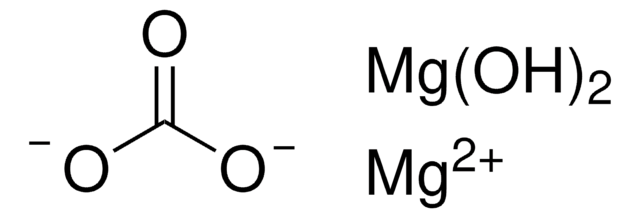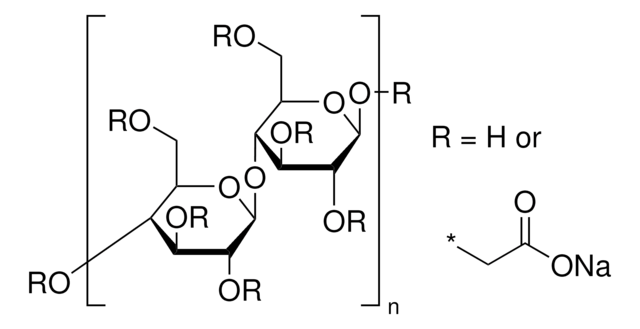PHR1328
Magnesium carbonate
Pharmaceutical Secondary Standard; Certified Reference Material
Synonim(y):
Magnesium carbonate, Magnesium carbonate hydrate
About This Item
Polecane produkty
klasa czystości
certified reference material
pharmaceutical secondary standard
Poziom jakości
agency
traceable to USP 1374226
rodzina API
magnesium carbonate
Certyfikat analizy
current certificate can be downloaded
metody
HPLC: suitable
gas chromatography (GC): suitable
Zastosowanie
pharmaceutical (small molecule)
format
neat
temp. przechowywania
2-30°C
ciąg SMILES
O.[Mg++].[O-]C([O-])=O
InChI
1S/CH2O3.Mg.H2O/c2-1(3)4;;/h(H2,2,3,4);;1H2/q;+2;/p-2
Klucz InChI
OUHCLAKJJGMPSW-UHFFFAOYSA-L
Szukasz podobnych produktów? Odwiedź Przewodnik dotyczący porównywania produktów
Opis ogólny
Zastosowanie
Komentarz do analizy
Inne uwagi
Przypis
produkt powiązany
Kod klasy składowania
11 - Combustible Solids
Klasa zagrożenia wodnego (WGK)
WGK 3
Temperatura zapłonu (°F)
Not applicable
Temperatura zapłonu (°C)
Not applicable
Choose from one of the most recent versions:
Certyfikaty analizy (CoA)
Don't see the Right Version?
If you require a particular version, you can look up a specific certificate by the Lot or Batch number.
Masz już ten produkt?
Dokumenty związane z niedawno zakupionymi produktami zostały zamieszczone w Bibliotece dokumentów.
Klienci oglądali również te produkty
Nasz zespół naukowców ma doświadczenie we wszystkich obszarach badań, w tym w naukach przyrodniczych, materiałoznawstwie, syntezie chemicznej, chromatografii, analityce i wielu innych dziedzinach.
Skontaktuj się z zespołem ds. pomocy technicznej







